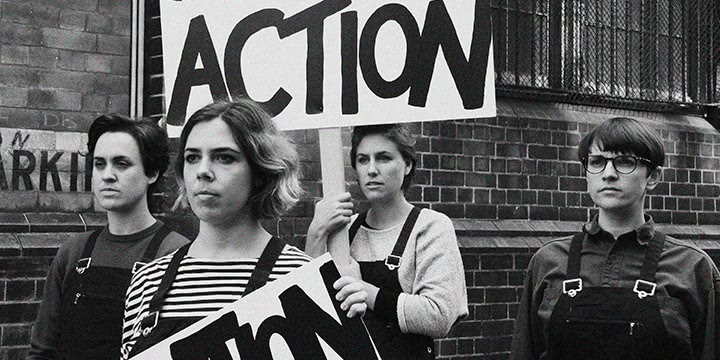It’s oddly comforting when even a ‘simple’ question is difficult for an artist to answer.
When Kate Blackmore, one of the founding members of feminist art collective Brown Council, is asked what her upcoming performance piece Making History is about, she hesitates. “It’s kind of complicated, actually,” Blackmore laughs. “It’s not a kind of one sentence, ‘This is what the work is about.’ It’s hard to know which angle to start from.”
That’s not just Blackmore giving a deliberately vague non-answer, either. The stunning tangle of ideas and themes that underpins Making History makes it difficult to discuss the work without shooting off on a dozen tangents. Part performance art, part work of theatre, part audience interaction, Making History is shaping up to be a stunning critique of the way we remember and alter collective memory.
“[We’re performing in] an old gallery,” Blackmore says. “Well, it’s not being used as a gallery at the moment. It’s just a big kind of open, neutral space and we’re installing a set, almost like a theatre set inside there. And when the Biennale starts we will be performing inside the space and asking other artists to perform with us as well.”
Collaborating with other artists has been a habit Brown Council has developed over the years. Indeed, in many ways Making History is a distinctly Brown Council-esque work, in that it concerns itself with themes the collective has been exploring for almost half a decade.
“Basically the concept of the work is about history, about how history is told, and it’s about trying to rethink how we tell history in a performative way,” Blackmore says. She chews over every word, considering each one. “We’re critiquing the way history leaves out some people … And the people who are left out are usually women. [Also] performance art isn’t often historicised. We’re critiquing that too.
“History is often written by men, and often white men at that, and so I think those narratives tend to leave out people who don’t tend to fit into that category. And performance art is a medium that is an ephemeral medium. It exists for a moment and then it’s gone. It’s difficult to insert into history in that sense. But that doesn’t mean you can’t.”
In this way, Making History ties into the work the group has done exploring the forgotten art of Barbara Cleveland, a mythic feminist performance artist who Brown Council first discovered almost six years ago, and has been obsessed with re-inserting into the historical narrative ever since.
“With Barbara Cleveland, some of her work was documented and some of it wasn’t. But in our minds we’re unearthing her memory through her work,” Blackmore says. “We’re not the only ones talking about this either. There are a lot of artists out there who are talking and critiquing the way history is written. I think a lot of artists are trying to pull the narrative away from one perspective. There’s a lot of interesting stuff going on right now.”
Blackmore is right. The slow move towards truly representational art – a cause Brown Council has found itself right in the thick of – is exciting indeed. “We’re a collective of four women and we work together very collaboratively,” says Blackmore. “We have a sort of idea that history should be poly-vocal. In order for it to be really a representation of the community as a whole, we need to have lots of voices, rather than just one perspective.”
[Brown Council photo by Pia van Gelder]
Brown Council’sMaking History happens,as part of Biennale of Sydney 2016, Saturdays March 26; April 9 and 23; May 7, 14 and 21; and June 4, at 86 George Street, Redfern. For more info head tobiennaleofsydney.com.au.



































